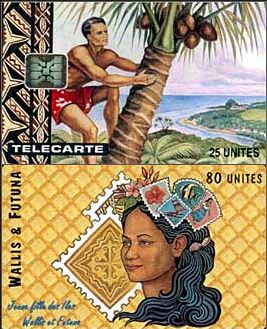Discovery in that, I find I am woefully ignorant of what makes up Polynesia. Polynesian Triangle? Check. Six largest cultures? Hawaii, Tonga, Samoa, Maori, Tahiti and Fiji. Check. And then there are the Cook Islands, Easter Island, Kiribas, Niue, Tuvalu and Pitcairn Island among many others. But I hadn’t heard of Wallis and Futuna until recently. Looks a lot like Samoa to me and actually they share weather characteristics like only needing one number for the temperature and the humidity — 80.

While the islands lie between Samoa and Fiji, the language and culture of Wallis are more closely related to Tonga while Futuna’s roots are more closely tied to Samoa. For some reason there is a bit of rivalry between the two cultures. There is a third main island, Alofi which is mostly uninhabited. While a source of fresh water is currently a problem it seems the Futunians took issue with the Alofians sometime in the nineteenth century and basically wiped them out. You might want to look up the method of disposal–would be great for your next trivia challenge.
This from polynesia.com:
Scientific evidence indicates Wallis, which is traditionally called Uvea, and Futuna — which are located between Samoa and Fiji — were historically settled over 2,000 years ago. About 500 years ago, marauding Tongans captured the islands and intermarried with the Polynesian people there. British navigator Samuel Wallis discovered Uvea in 1767, but the islands have been under French administration since 1842. Today, about 9,500 Polynesians live on Wallis and about 5,000 on Futuna. A relatively large number of Wallisians also live in New Caledonia and Vanuatu, which was previously a French territory.

And there you have it — a brief glimpse of Wallis and Futuna, ancient cultures of Polynesia — a new discovery for me, modern Polynesian.
Susan Noanoa

Recent Comments